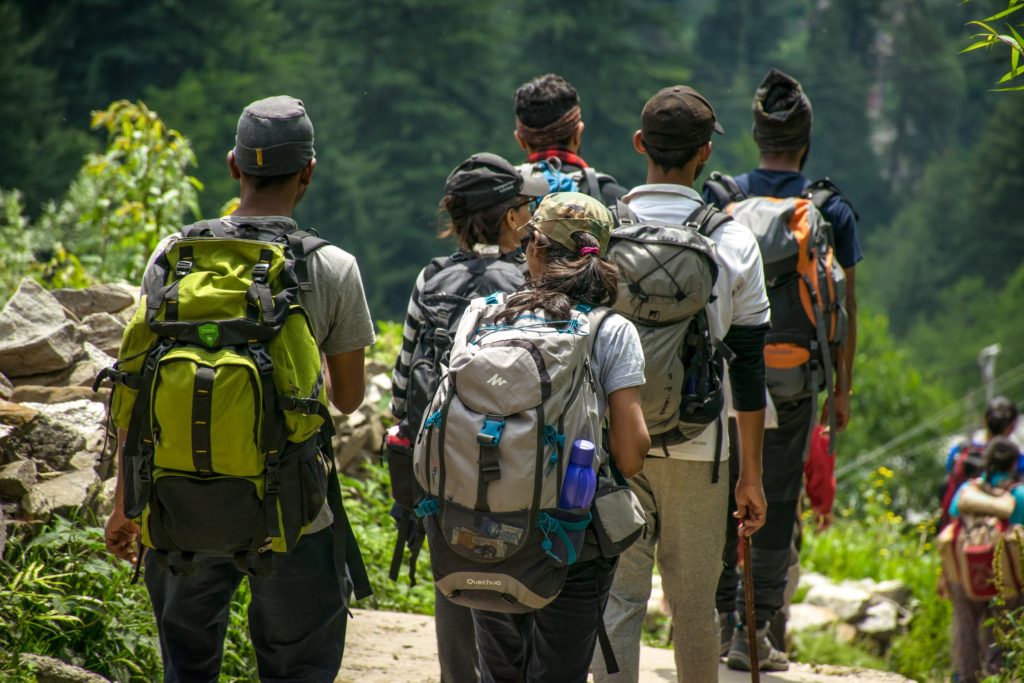For those that appreciate the outdoors, being outside is a major part of living. Whether you’re a backpacker, hiker, cyclist, runner, surfer, skier, snowboarder, rafter, or a mixture of these and more, the outdoors are your playground. However, even the most seasoned outdoor sports enthusiast should remember some key outdoor safety tips. Though the wilderness and outdoor activities are amazing, they can also be extremely dangerous. Getting lost, getting hurt, and withstanding the elements can be hazardous aspects to outdoor adventuring. For that reason, it’s important to take precautions.
Tell Someone Where You Are
No matter how many times you head out to experience the outdoors, even if it’s a location you’re familiar with, you have to tell someone where you are. There have been plenty of fatal or near-fatal experiences attributed to this mistake. Telling someone where you’re going and when you should be back will help to find you in a timely manner if you get lost or hurt. Text a friend, leave a note, or call a loved one if you’re headed out to explore the outdoors. Even the most experienced outdoorsman can find themselves in a bad situation. Precautions are necessary regardless of your skill level.

Bring the Right Gear
What gear you’ll need will vary depending on what you’re doing, where you’re going, and the elements you’re dealing with. Not having the right gear can be dangerous. It’s important to take your surroundings into account when you’re spending time in the outdoors. If you’re participating in a water activity, for instance, having the wrong wetsuit thickness for the temperature can mean the difference between warmth and hypothermia. This can also mean extra socks, the right boots, or even the right type of bike. Wear your helmet, have your life preserver, and follow any other safety precautions for your sport. Research your area and the elements/terrain you should anticipate and pack accordingly.
Pack the Essentials
Again, the essentials you’ll need will vary depending on your situation, but it’s important to understand what is essential in each situation. In many situations, it’s important to at least have plenty of food and water. When packing food or snacks, be strategic about the type of the types of proteins you bring along in order to provide yourself with the most fuel while you’re active or if you find yourself in a survival situation. Think soy, nuts, or jerky — all proteins that provide energy and travel well.
You’ll also need water, warmth, shelter, and navigation. Of course, not every excursion will lend itself to having a tent around. Instead, in a smaller pack, be sure you have some tools such as a rope, matches, a knife, and a compass. This will allow you to create the things you don’t have — like making a fire or a shelter.
Basic First Aid and Survival Skills
Any basic first aid and survival you’ll want to know should be built around the area you’re in. Such as understanding avalanche survival in snowy regions or how to help dehydration in hot climates. However, having a first aid kit is pretty universal regardless of your terrain. A first aid kit will help with minor wound dressing, burns, pain, insect bites, and swelling. Take the time to learn some basic first aid like taking care of cuts, how to make a sling, taking care of shock, the importance of CPR, how to stop bleeding, and preventing and treating conditions related to extreme weather. In terms of survival, be sure you know how to build a fire and understand the threats in your area such as wildlife or poisonous plants. Knowing some basic first aid and survival skills can make all the difference in an emergency situation.

Be Mindful of Your Companions
When you’re experiencing the outdoors with someone else, it’s not just your own safety you should be concerned with. It’s your companion’s safety as well. Whether you’re with another outdoor enthusiast, your children, or your pet, be sure to protect them from the outdoors as well. For adult companions, be sure you’re working to check each other for the right gear and safety precautions. With children, be sure they are protected from the elements and staying safe. For pets, know the signs of heat stroke in dogs and never put them in dangerous situations. This way, everyone can keep stay safe while experiencing the outdoors.
Sometimes it can seem like being safe in the outdoors comes naturally — especially for those who are in the wilderness or outside all the time. However, all it takes is one freak accident or mistake to turn a normal outing into something disastrous. Often, these situations are unavoidable. The hope is that you’ll be able to prevent a disaster or survive one if it happens. For this reason, it’s important to remember these safety tips: always tell someone where you are, have the right gear, pack the essentials, know some basic first aid and survival skills, and keep your companions safe as well.


1 Comment
Pingback: Why is it important to be aware of health and safety? - Building-Craft